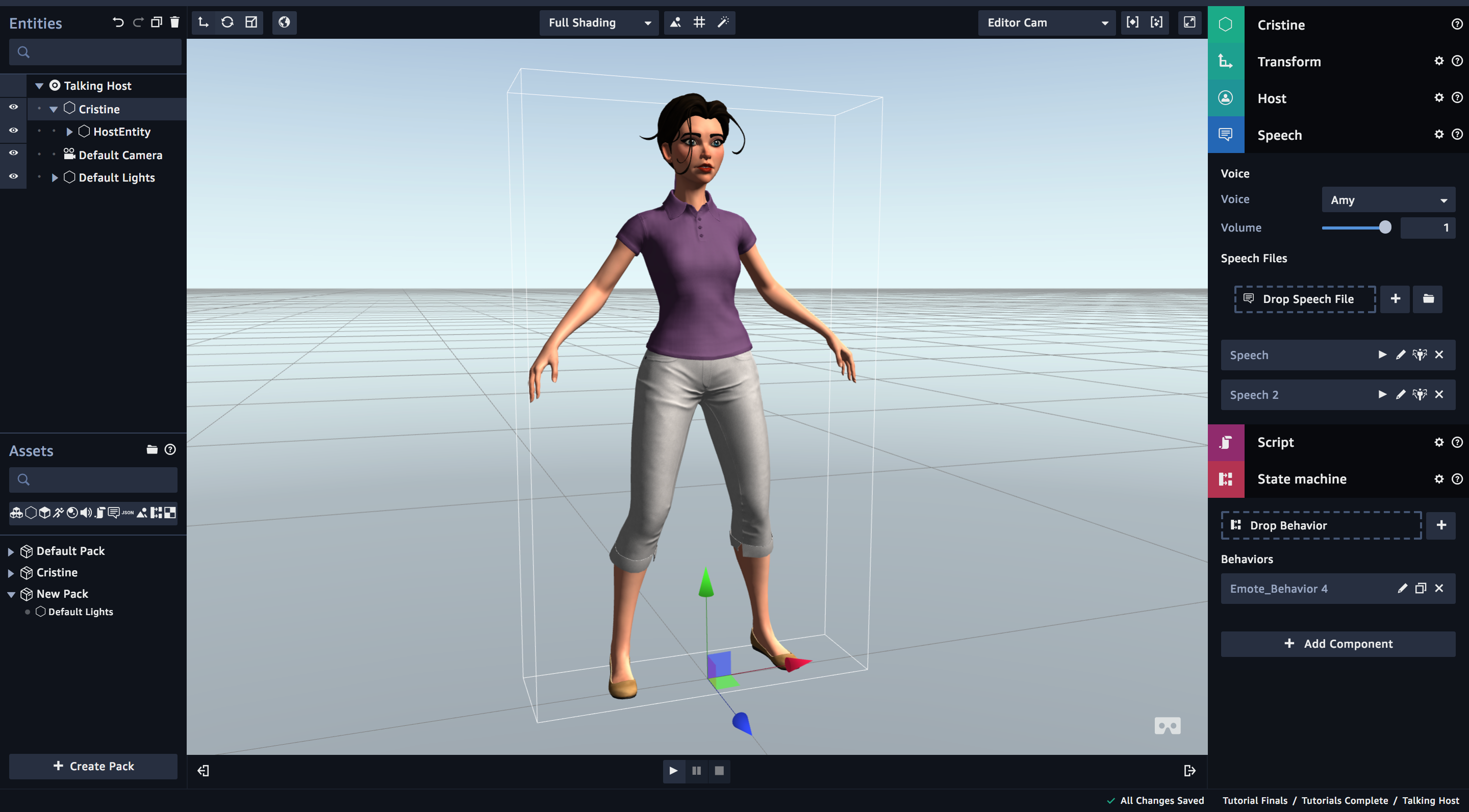Amazon Imagines a Lucrative Future in VR and AR Apps

Amazon is many things: online retailer, grocery store owner, provider of cloud computing services. And this week it added another title to its list: helper for companies that want to make virtual- and augmented-reality apps.
In Las Vegas at its annual Amazon Web Services conference, the company unveiled Sumerian, a Web-based service that makes it easier to create VR and AR experiences without special expertise in things like 3-D graphics. Available in an invite-only preview version for now, Sumerian includes lots of 3-D spaces and objects (such as furniture from Amazon’s own catalogue of stuff) that developers can drag and drop into various scenes, along with 3-D characters that can be customized and will interact with users (Sumerian is able to use Amazon’s voice recognition technology, widely popularized with its Alexa digital assistant). The kinds of experiences people make with Sumerian can then be viewed on headsets like Google’s Daydream View, HTC’s Vive, and Oculus’s Rift, as well as Apple’s iPhone and iPad.
The move makes Amazon the latest big tech company to jump on the AR and VR bandwagon, joining Apple, Google, Facebook, Microsoft, and others that have already introduced various tools for developers—and, in some cases, headsets, too—in hopes of capitalizing on these nascent technologies.
Why is Amazon doing it? According to Marco Argenti, vice president of technology for AWS, it’s reacting to a desire from companies that want to try out AR and VR for everything from training to virtual concierge services but don’t have the technical capabilities to make, say, a VR app from scratch.
Argenti thinks simplifying the creation process (he believes that anybody who can make a Web page should be able to make a VR or AR experience) could lead to more stuff to do in AR and VR, which in turn may help the technologies spread.
So far, companies trying out Sumerian include medical-device maker Thermo Fisher Scientific, location-data startup Mapbox, and Nokia. If Sumerian catches on with businesses, it could lead to a range of both internal and consumer-geared apps. A factory operator might, for instance, use Sumerian to build a VR app that trains employees on new safety procedures. Or perhaps a real estate company will use it for virtual home tours.
Of course, Sumerian is also a potential moneymaker for Amazon. Rather than charging a fee to use Sumerian itself, Amazon charges users for services such as hosting and serving up VR and AR experiences to users.
With costs around six cents per gigabyte per month for Sumerian scene storage and 38 cents per gigabyte per month for scene traffic, it might sound like chump change right now, given the small market for AR and VR. But if the market continues to grow, it could eventually add up to a lot more for Amazon.
Keep Reading
Most Popular
Large language models can do jaw-dropping things. But nobody knows exactly why.
And that's a problem. Figuring it out is one of the biggest scientific puzzles of our time and a crucial step towards controlling more powerful future models.
The problem with plug-in hybrids? Their drivers.
Plug-in hybrids are often sold as a transition to EVs, but new data from Europe shows we’re still underestimating the emissions they produce.
How scientists traced a mysterious covid case back to six toilets
When wastewater surveillance turns into a hunt for a single infected individual, the ethics get tricky.
Google DeepMind’s new generative model makes Super Mario–like games from scratch
Genie learns how to control games by watching hours and hours of video. It could help train next-gen robots too.
Stay connected
Get the latest updates from
MIT Technology Review
Discover special offers, top stories, upcoming events, and more.